Cao Fei’s dystopian fantasies fuse art and technology
Chinese artist Cao Fei’s dystopian art tackles themes such as the automation of labour, hyper-capitalism and the effect of a global pandemic. Having just completed her first major solo show in Beijing, the prolific winner of the 2021 Deutsche Börse Photography Foundation Prize is going global, with her retro-futuristic take on contemporary life now the subject of exhibitions from Los Angeles to Rome, and a 20-page portfolio for Wallpaper*

Jin Jia Ji - Photography
‘Cao Fei is running late,’ says the interpreter for my interview. ‘She can’t get Zoom to work on her new computer.’ The interpreter – he’s calling in from Melbourne, and I, from Singapore – tries to set up FaceTime, but that doesn’t work either. And just as we’ve managed to log on to Google Meet, Cao comes online on Zoom from Beijing. She’s using her old laptop. ‘I’m so sorry.’ The irony of the moment looms large.
Since she burst into an unsuspecting art world in 1999 with Imbalance 257 – a grainy, voyeuristic video of disaffected Chinese youth she’d shot for her third-year project at the Guangzhou Academy of Fine Arts – Cao has become renowned for her adept fusion of technology and visual art to create surrealistic, dystopian worlds where an entire online city floats over water (RMB City: A Second Life City Planning, 2007), a man is lost in hyperspace (Nova, 2019), and a robot vacuum cleaner wanders aimlessly through rubble (Rumba II: Nomad, 2015).
‘Cao’s practice has always hovered between the real and virtual worlds,’ says Stephanie Fong, the founder of Fost Gallery in Singapore, who has been following Cao’s work since Cosplayers, 2004. ‘She was making multimedia works even before the current generation of art consumers was born.’ And now, in the midst of arguably the most prolific period of her professional life, Cao finds herself sufficiently let down by technology that she declines to even turn on her Zoom video. But then, with such a punishing schedule, who can blame her?
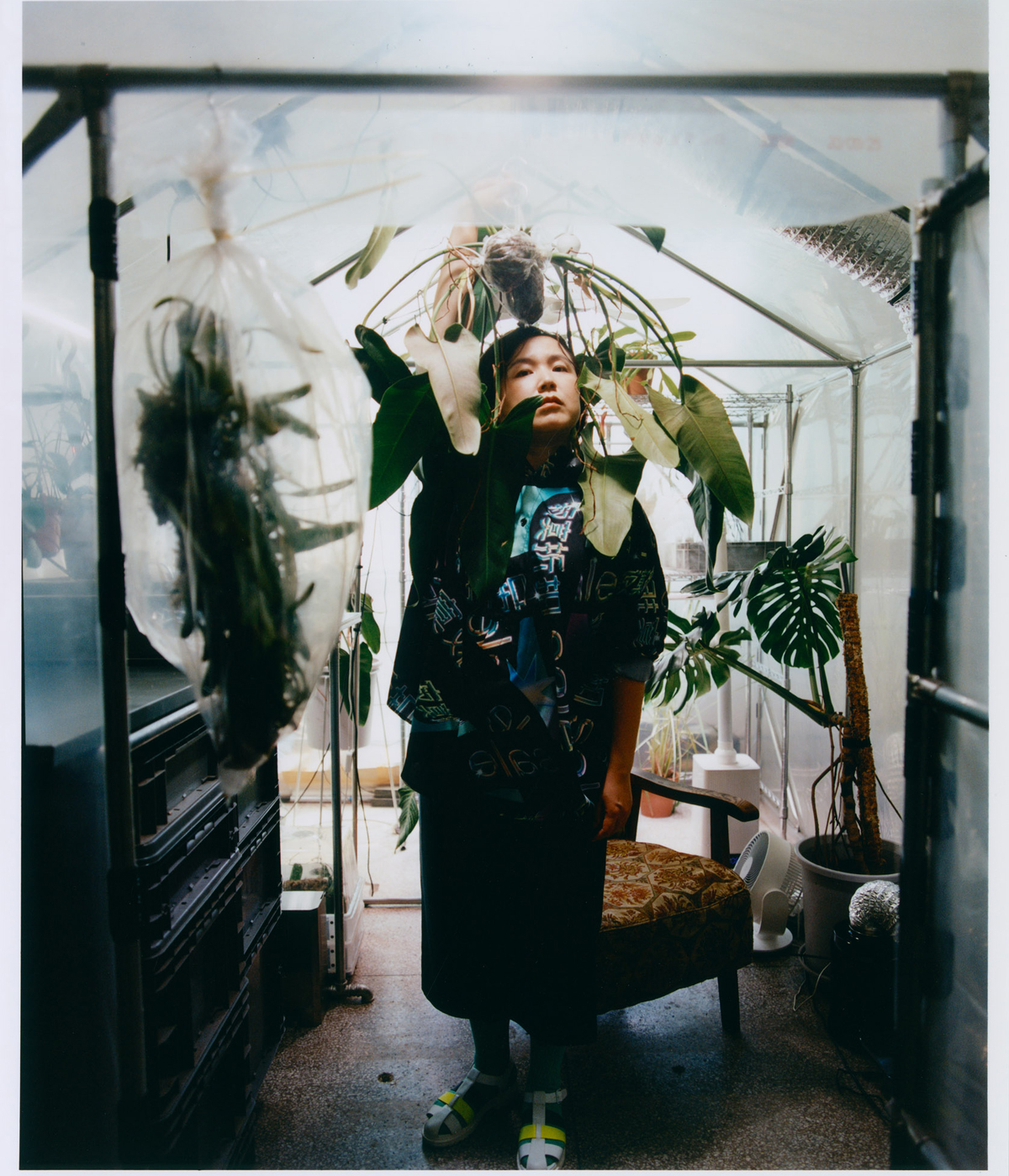
Cao Fei in her studio in Beijing’s 798 Art Zone
She has just come off her first major solo show in China at UCCA Beijing, a milestone she believes has brought her the widespread recognition that has eluded her over the past 20 years. The show charted her artistic development in the context of China’s profound social changes, and the aesthetic and cultural transformations they caused.
In August, her film Nova had its Russian premiere at the Moscow International Experimental Film Festival. A month later, she won the Deutsche Börse Photography Foundation Prize for ‘Blueprints’, her 2020 exhibition at London’s Serpentine Galleries. She currently has a show at Sprüth Magers’ Los Angeles gallery, and is prepping for ‘Supernova’, another solo at Rome’s MAXXI.
All this, while creating the limited-edition cover for Wallpaper’s November 2021 print issue. It is the latest riff on Hong Xia, her research project on the history and current state of Jiuxianqiao, the Beijing neighbourhood she works in and which was the birthplace of China’s electronics industry.
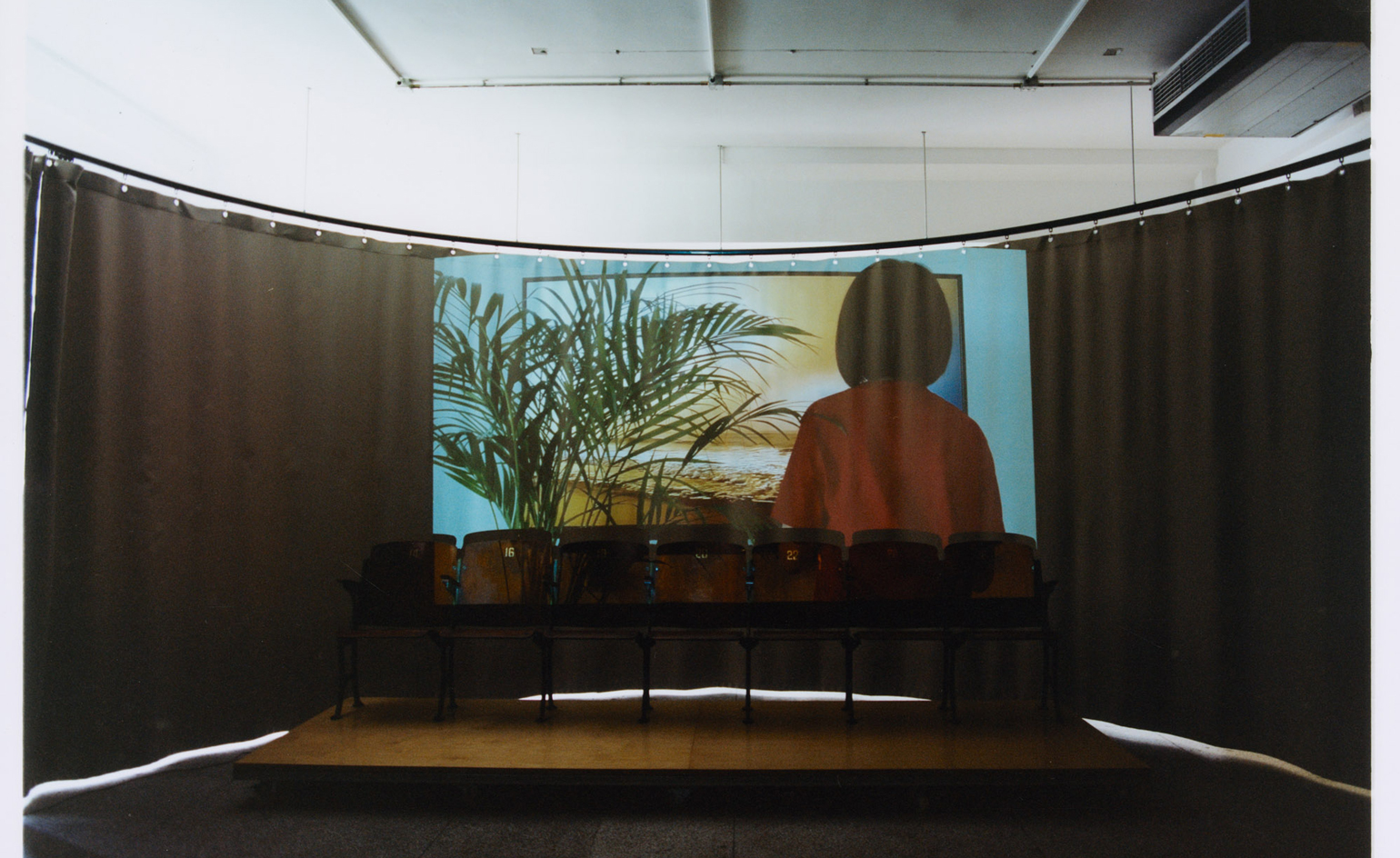
A projection from Isle of Instability, 2020, which documents Cao’s experience of living under lockdown. The chairs come from the now-demolished Hongxia Theatre, formerly Cao’s studio
The Wallpaper* portfolio is a retrospective of sorts of two of Cao’s seminal works. Nova – which debuted at her Pompidou show ‘HX’ in 2019 – is a retro-futurist tale of a failed secret science project that attempts to turn humans into digital mediums. Lost in cyberspace, the protagonist drifts through overlapping worlds and time. The other work, Asia One, 2018, commissioned by the Guggenheim Museum, is a meditation on the effects of automated labour and the repetitive motion of factories on the human spirit. ‘It’s been six years since I started Hong Xia, but it’s a continuous project,’ Cao says, explaining that there is much material still to be mined in documenting the evolution of a specific urban pocket as buildings are torn down and rebuilt, and communities reshaped. ‘It’s a combination of history, fiction and the abstract. The Wallpaper* cover has a lot to do with the post-Covid world. Will we live like this forever, or will there be an end in a year, two years? And, of course, these questions are all linked to issues currently affecting the world, such as climate change.’
For any artist, that’s a lot of ground to cover, but for two decades now, Cao has been both prolific and thoughtful in her exploration of such grand themes. For Yung Ma, who curated ‘HX’ at the Centre Pompidou in 2019 and is now the artistic director of Seoul Mediacity Biennale, Cao ‘has the unique ability to connect the past with the present in a playful yet profound manner. In doing so, she has created visions of the future that are deeply rooted in our dreams, hope, fear and anxiety.’
The bounty of her current works may say much about Cao’s evergreen popularity, but it also obscures the discordance of the better part of 2020, when the pandemic kept her and her family in Singapore. ‘I’ve never spent such a long time out of China,’ she says. ‘It wasn’t a good feeling.’ Yet, she managed to impose a sense of perspective onto the experience, wringing a new work out of the unfamiliar sense of isolation, uncertainty and dislocation. Commissioned by Audemars Piguet Contemporary, Isle of Instability, 2020, is a magpie’s collection of video, photographs and sculptures whose disparate natures are emotionally stitched together by the pandemic. It debuted at West Bund Art & Design in Shanghai and it is, to date, her most personal work.
Confined to a Singapore family apartment with her children and husband, the Singaporean conceptual artist Lim Tzay Chuen, Cao imagined her then nine-year-old daughter, Qing, as the last surviving human on an island, marooned with the detritus of the virus – bottles of hand sanitiser, bread bag clips and thermometers – but still unaccountably hopeful about the future.
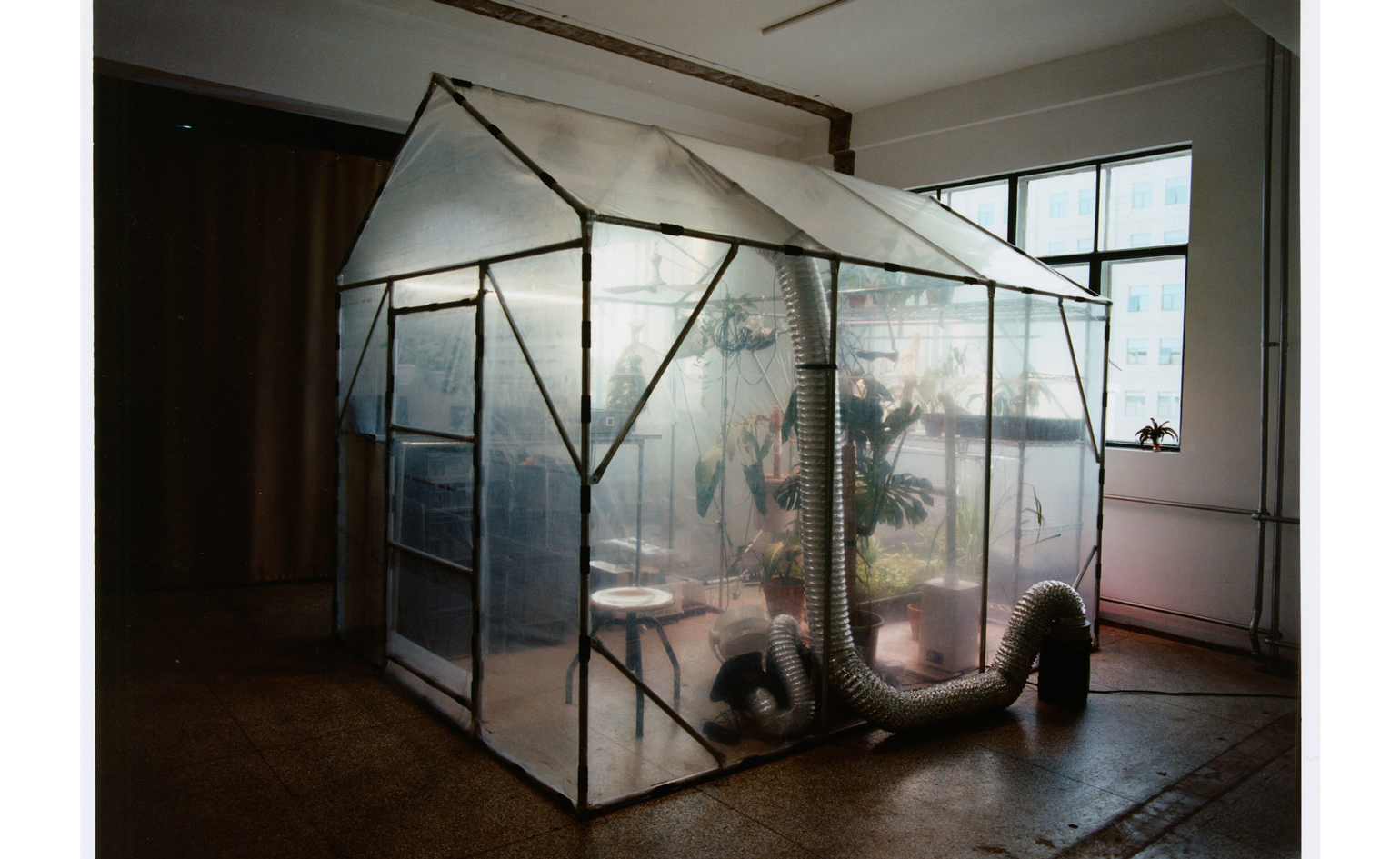
A greenhouse in Cao’s studio
Part of that hope springs from the fact that at a time when the virus was tearing apart entire societies, Cao was grateful to be with her children and to create something with them. Another part comes from the realisation that she has always believed in the end of the world and seems to have spent her whole career preparing for this very moment, prophetically exploring how she thought humanity would experience that crisis in Haze and Fog, 2013, and LA Town, 2014. And so, when Covid-19 arrived, it came with both a sense of déjà-vu and relief. Relief, because having already imagined the worst, she felt she was at liberty to explore a more positive side to the pandemic. This is not to say that there is a happy ending, but rather, well, it’s not the end of the world.
With Isle of Instability, you realise that whilst Cao’s work is streaked with the constant theme of gloomy dystopia, it is also firmly balanced by a sense of impermanence – in the positive sense that, whatever else may be troubling us, it won’t last, because everything is in a state of flux. In the world according to Cao Fei, the sun will rise and shine again over her daughter’s island, just as it does at the end of her seminal work, Nova. Which makes the artist’s job of faithfully recording the times all the more important.
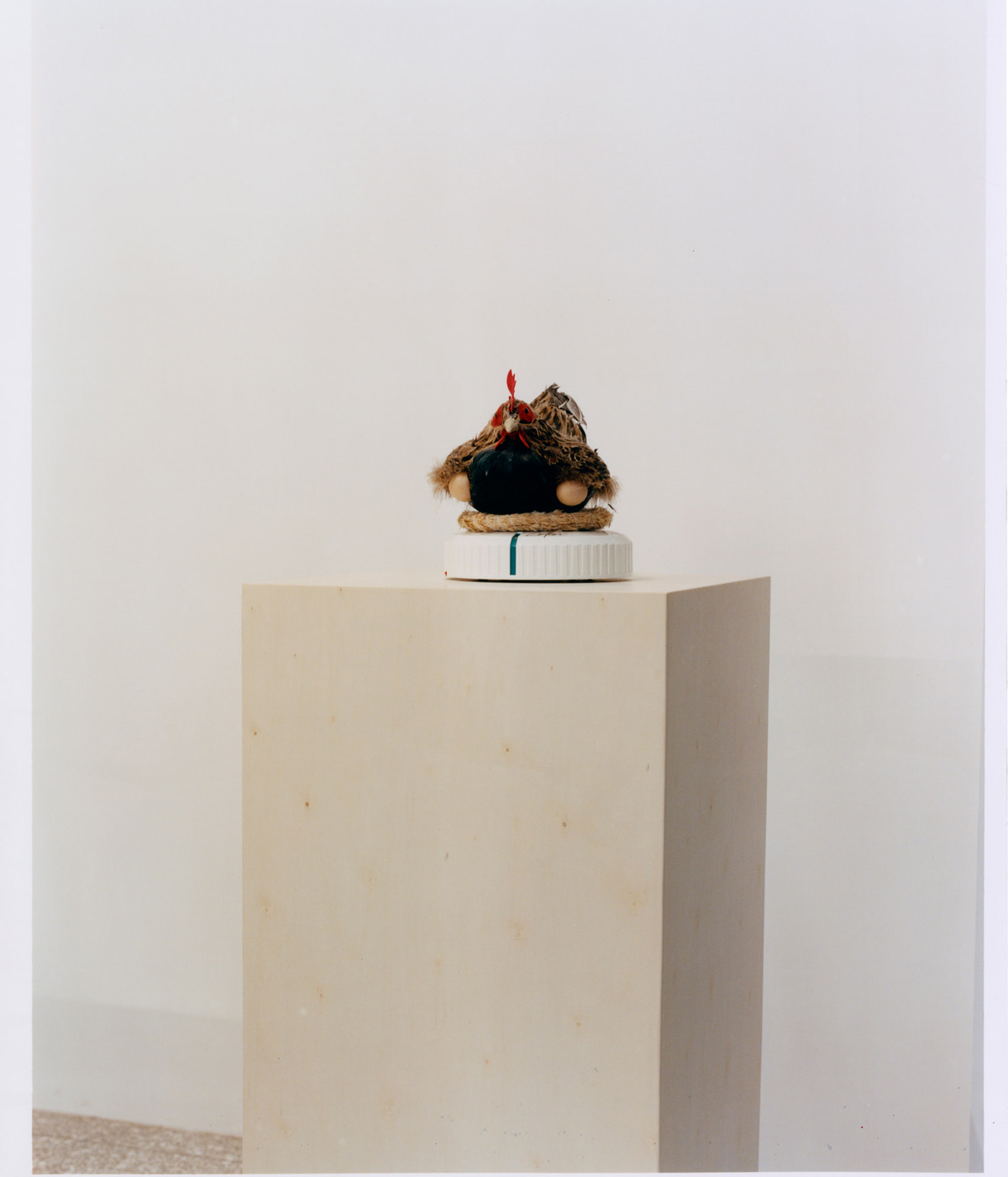
A model rooster produced as a prop for the video Rumba II, 2015
This fidelity to nature and history imprinted early on Cao. Born in 1978, she grew up during the years of Deng Xiaoping’s Open Door Policy, which unleashed China’s economic and political powers – embodied in a magnified version of capitalism – on the world. Those reforms transformed China by empowering an entire generation with the belief that anything was possible, even if it came at the cost of their individuality.
Cao’s early works are all driven by this belief. Cosplayers showed how a segment of Chinese society, disenfranchised by China’s runaway hyper-capitalism, regained some of its power by dressing up as fictional cosplayers. One of her best known works, Whose Utopia?, 2006, tries to humanise China’s industrialisation by asking workers in a light bulb factory to explore their personal ambitions.
Philip Tinari, director of the UCCA Center for Contemporary Art, notes that at the time of Cao’s emergence, ‘she was among the first artists to enter a Chinese art world that was beginning to find its contours, newly capable of recognising not just generational difference but a new sensibility. Unlike the contemporaneous clusters of experimentation driven by artists just a few years her senior in Beijing and Shanghai, she did not then understand herself as part of a boundary-pushing dialectic stretching back to earlier movements like the Stars and the 1985 New Wave, but rather as a participant in a new culture and society taking shape around her.’
As Cao herself points out, ‘When I was growing up, it was a period of intense urban transformation. I was immersed in the new pop culture and films, so it was natural that I would be so focused on these external social changes, especially in Whose Utopia?’
Eugene Tan, director of the National Gallery Singapore and Singapore Art Museum, says that at a time when the world was beginning to comprehend China’s rise onto the global stage, Whose Utopia? provided a fascinating insight into Chinese society. ‘Juxtaposed against the backdrop of an industrial factory – something we associate with China, as the “factory of the world” – it demonstrated the desire for self-expression and individual identity in the Chinese people, manifested through the performances of Cao Fei’s collaborators in the video, who were workers in the factory.’
In other words, Cao’s work, for all its elements of fantasy, is rooted firmly in a genuine social concern, which Tan says explains her enduring connection with her audience. ‘Her work resonates because of the subjects they centre on – the effects of neoliberalist capitalism on our environments, particularly in China where it has taken hold rapidly. And its effects are especially pronounced, its omnipresence and inescapability, and the individual reactions and emotions from individuals who exist within these quite alienating spaces.’
In a very unique way, concurs Philomene Magers, co-founder of Sprüth Magers, ‘Cao deals with the changes in our globalised and digitalised world and how people react and integrate them into their lives. This combined with her own distinct visual language makes her one of the most exciting artists of her generation.’
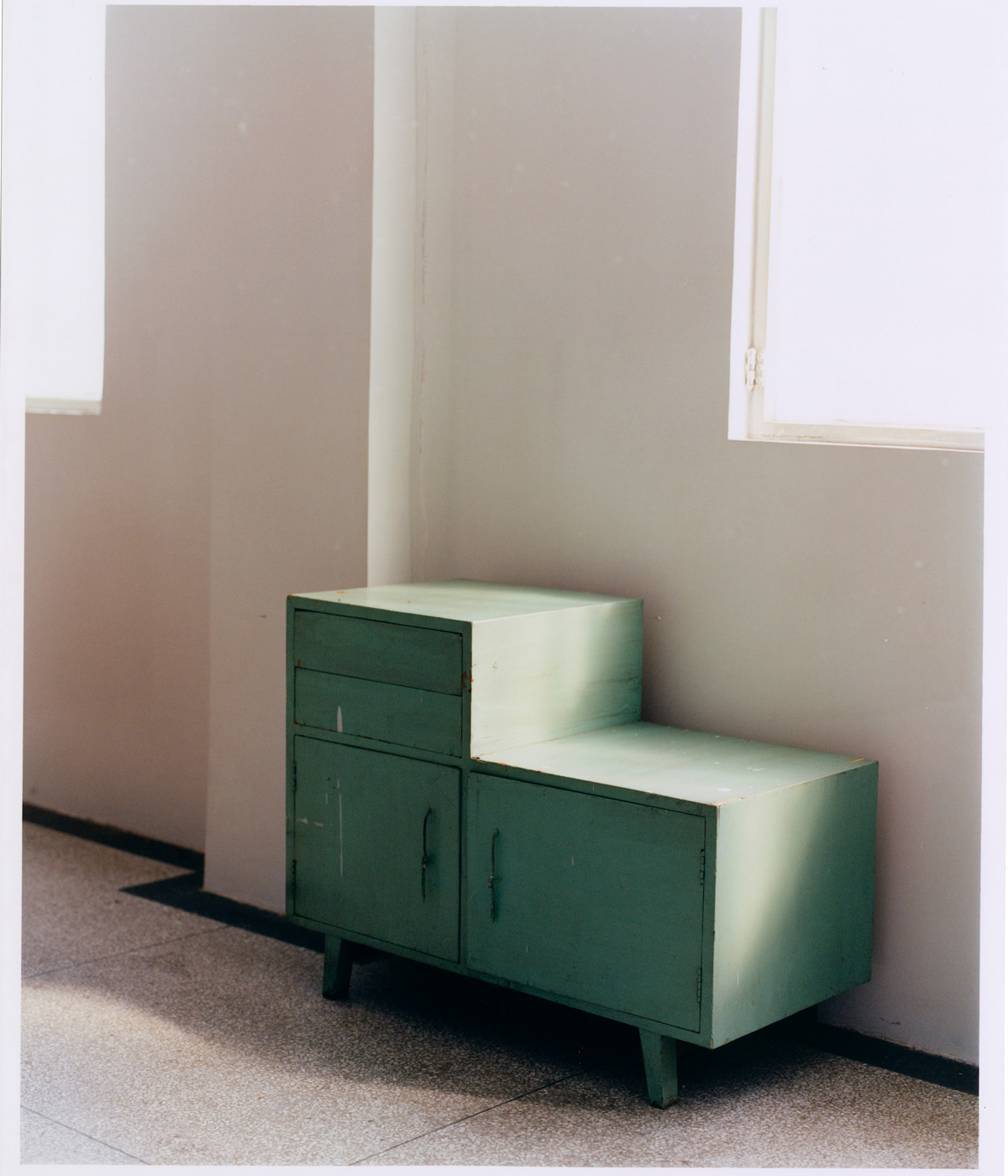
A green cabinet found by the artist in a rubbish dump
Another reason for Cao’s endurance as an artist is that her sympathies genuinely reflect her own experiences. There isn’t a single false note to be found simply because she refuses to fake an emotion, which explains why when I ask her about the absence of gender politics in her work, there is a brief puzzled silence. Her eventual response – ‘Gender has not been an issue in my personal experience as an artist’ – has the terse quality of a verbal shrug, despite the fact that China’s art community is almost entirely male-dominated.
From another perspective, the lack of gender politics may also be due to the fact that her work is based on universality, rather than a narrow identity of, say, a Chinese artist. As Fong notes, though many of Cao’s works feature China as part of the mise-en-scène, ‘they have a sense of universality, either through the themes she is dealing with, or the use of popular global culture and iconography.’
‘She is much more than a Chinese artist,’ adds the Hong Kong-based art critic Alexandra Seno. ‘She’s really an artist of the contemporary. Her work is for everyone, and the test of her success is how relatable her art is beyond geography, age and context.’
Tan also agrees: ‘With the effects of global capitalism being the central focus of her work, I think it speaks to a likewise global audience. While she does take a particular interest in developments in China, due to how rapidly and profoundly economic change has taken hold there, perhaps the need to pigeonhole her as a Chinese artist is ambiguous.’
If there is a common thread to be found in Cao’s work, it would be her innate curiosity about different media. Case in point is her intuitive grasp and enthusiastic embrace of technology. She began blogging at a time when the act was practically unknown in China. She’s been using digital tools such as augmented reality and virtual reality for years now, an approach that has paid dividends in a post-Covid world where staging physical exhibits has become so challenging.
She is, for instance, an aficionado of Non-Fungible Tokens, or NFTs, in which digital versions of real-world artistic creations are bought and sold online. A few days after our conversation, she debuted her legendary avatar China Tracy on Kanon’s K21 project – a groundbreaking open-source, closed-end art vault that allows artists to create, protect and store art files of unlimited size and metadata. If that all sounds like gobbledegook to you, there’s no shame in that. ‘The digitally adept Gen Zs are her ideal audience,’ says Fong, at the same time as she wistfully regrets not buying more of Cao’s work when she had a chance. ‘I can’t afford her anymore.’
What’s a little frightening is just how adaptable Cao is and, by extension, what more she is capable of as an artist. If, as Tan says, she cannot be pigeonholed as a Chinese artist, equally, her oeuvre defies convenient pegging as it continues to evolve. Unexpectedly, she credits part of this evolution to her husband. ‘I created Haze and Fog after I got married,’ she says, ‘and my friends all thought my work had become more restrained and minimalist.’
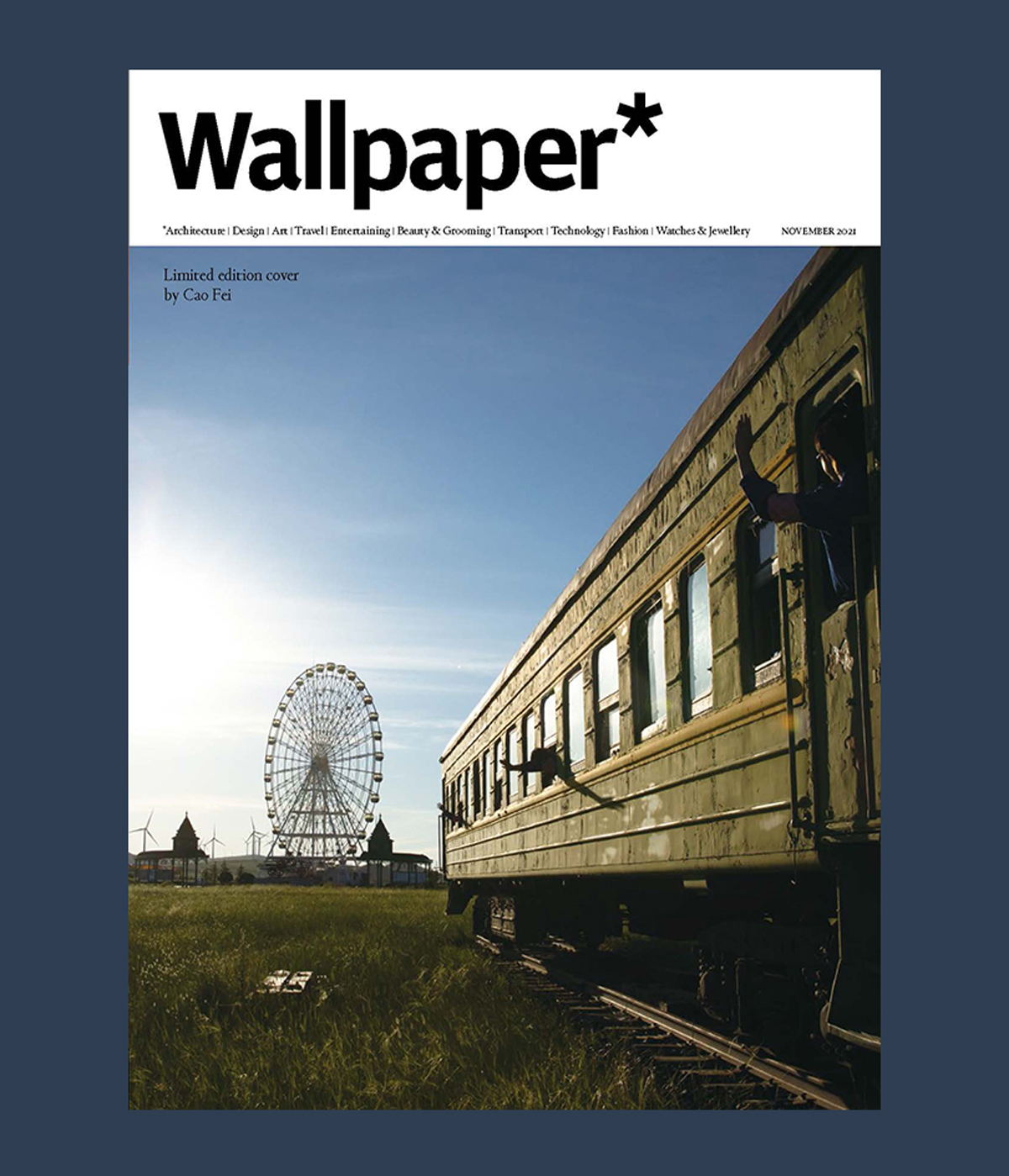
Cao’s limited-edition cover for Wallpaper’s November 2021 issue shows a train carriage and ferris wheel at the Jalainur Mammoth Scenic Area in Manzhouli, a border town between China and Russia. Limited-edition covers are available to print subscribers, see wallpaper.com/sub21
Receive our daily digest of inspiration, escapism and design stories from around the world direct to your inbox.
She also points to Fú Chá, 2020, which she created for the National Gallery Singapore just before the country went into lockdown. The installation featured a recreated traditional Chinese junk boat. Filled with water, it was suspended from an A-frame below a neon sign that read ‘Almost Arriving’, and it was programmed to swing back and forth on the structure’s axis, sloshing water like some out-of-time theme park ride. The junk boat was also, perhaps, ‘a metaphor for a concentration of hyper-consumption, the apotheosis of the neoliberal economic reform undertaken by China when Cao was a child,’ says Tan, who guided the project.
Cao says a work like Fú Chá would not have been possible before her marriage to Lim. ‘His approach as an artist is to focus on the non-visual elements, to try to use a simple object to represent a complex idea.’
That said, by the end of our interview, I find that while I’m considerably more versed in Cao’s art, I’m no closer to knowing her as a person. Talking to a disembodied voice on a rectangular blank on Zoom probably hasn’t helped. ‘I hope we’ll meet one day in Singapore,’ she says as we prepare to sign off. I begin to mutter a platitude about keeping safe, but then, I realise, just like her avatar China Tracy, who flits in and out of her work, she isn’t there anymore.
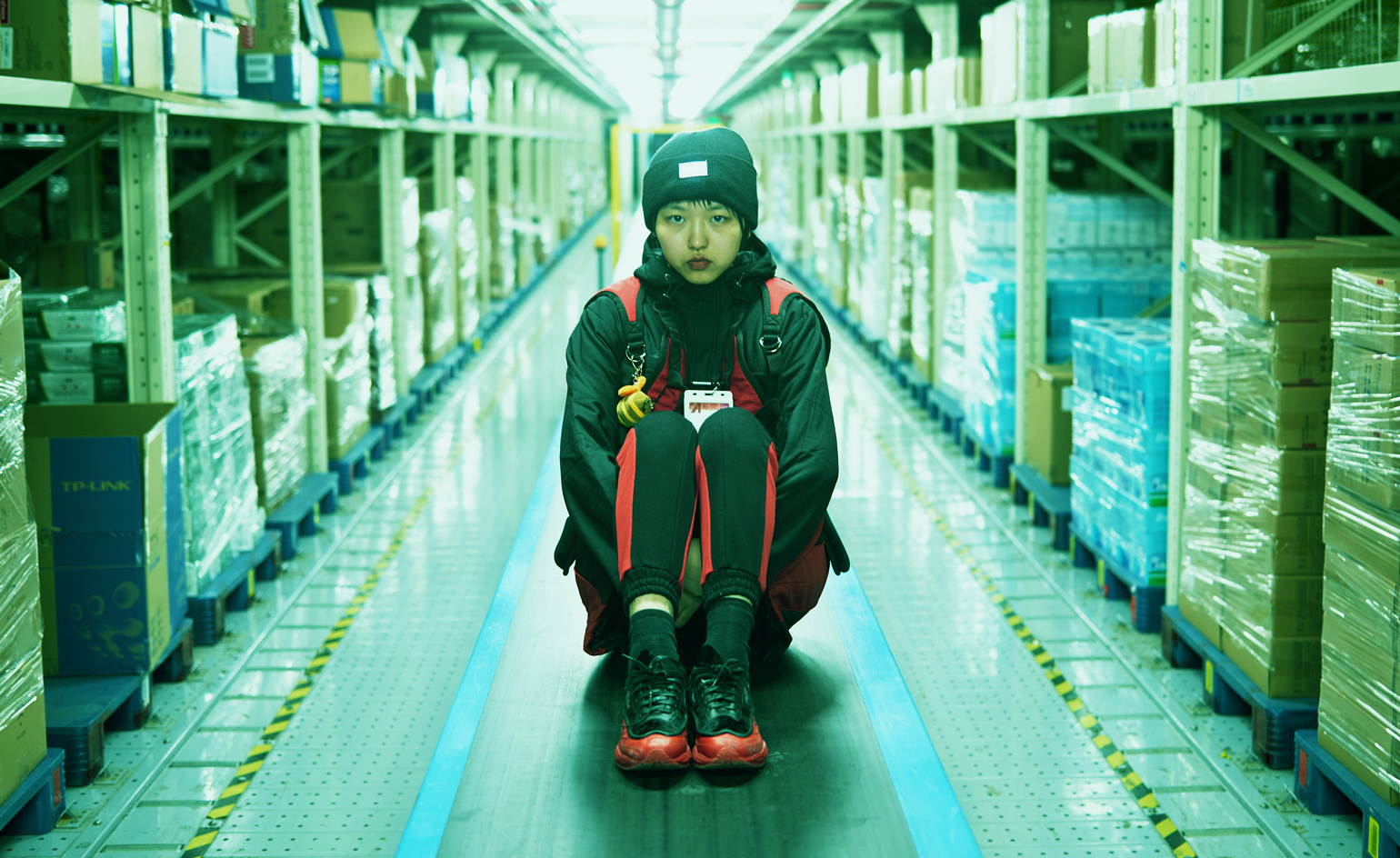
Still from Asia One, 2018, by Cao Fei. Single-channel HD video, 2.35:1, colour with sound, 63min 21sec. Commissioned by the Solomon R Guggenheim Museum, New York, for the Robert H N Ho Family Foundation Chinese Art Initiative. Courtesy of the artist, Vitamin Creative Space and Sprüth Magers
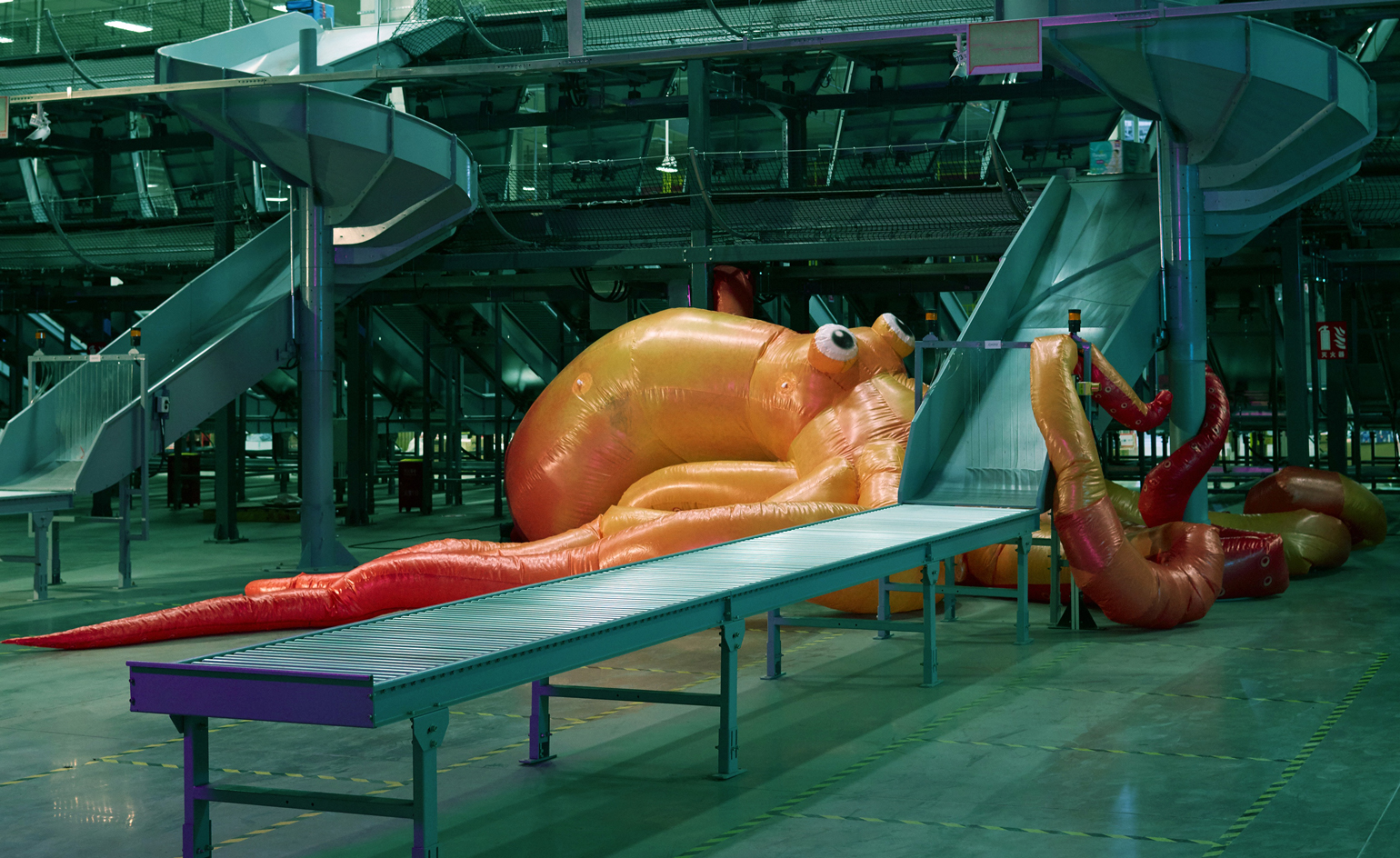
Still from Asia One, 2018, by Cao Fei. Single-channel HD video, 2.35:1, colour with sound, 63min 21sec. Commissioned by the Solomon R Guggenheim Museum, New York, for the Robert H N Ho Family Foundation Chinese Art Initiative. Courtesy of the artist, Vitamin Creative Space and Sprüth Magers
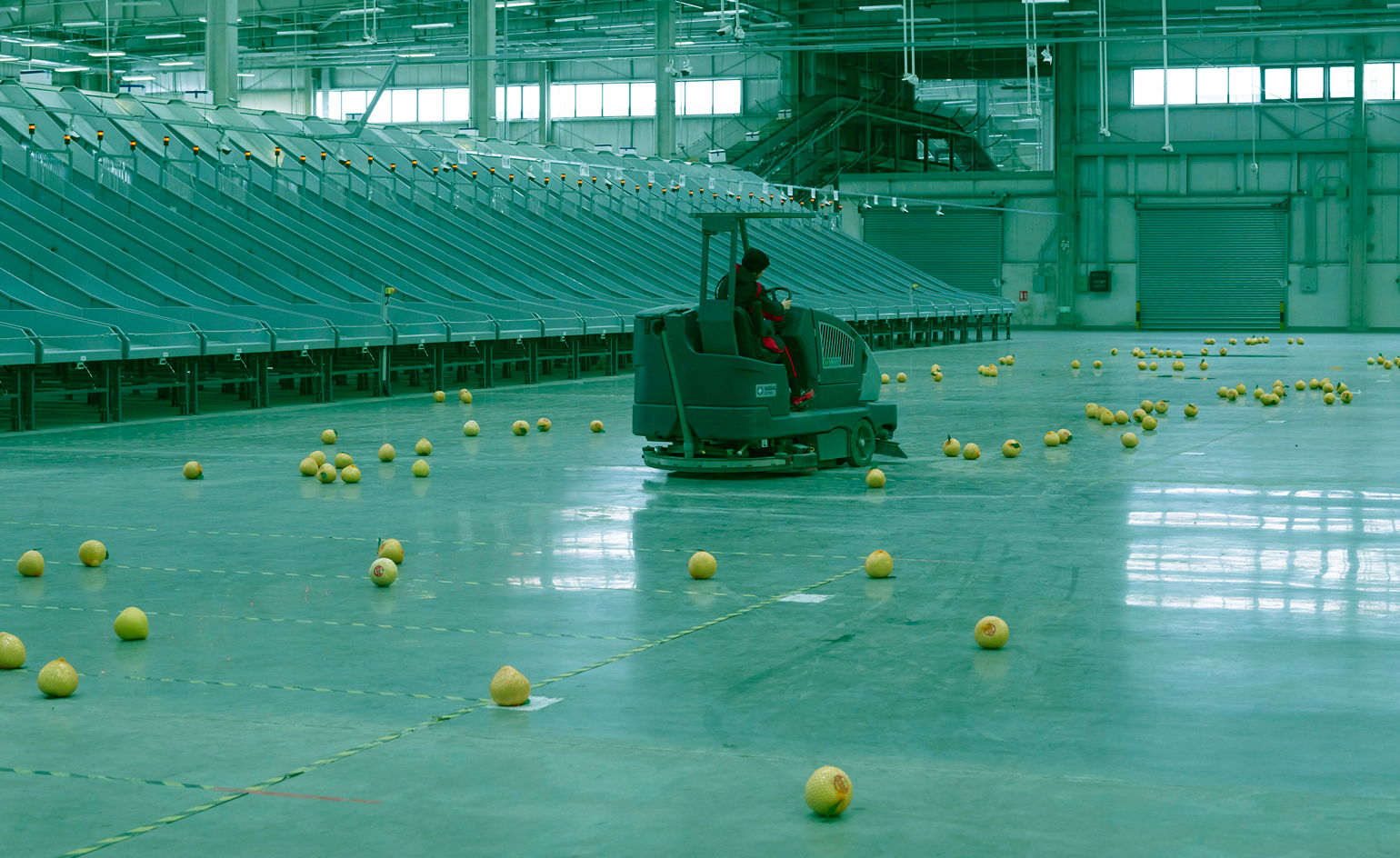
Still from Asia One, 2018, by Cao Fei. Single-channel HD video, 2.35:1, colour with sound, 63min 21sec. Commissioned by the Solomon R Guggenheim Museum, New York, for the Robert H N Ho Family Foundation Chinese Art Initiative. Courtesy of the artist, Vitamin Creative Space and Sprüth Magers
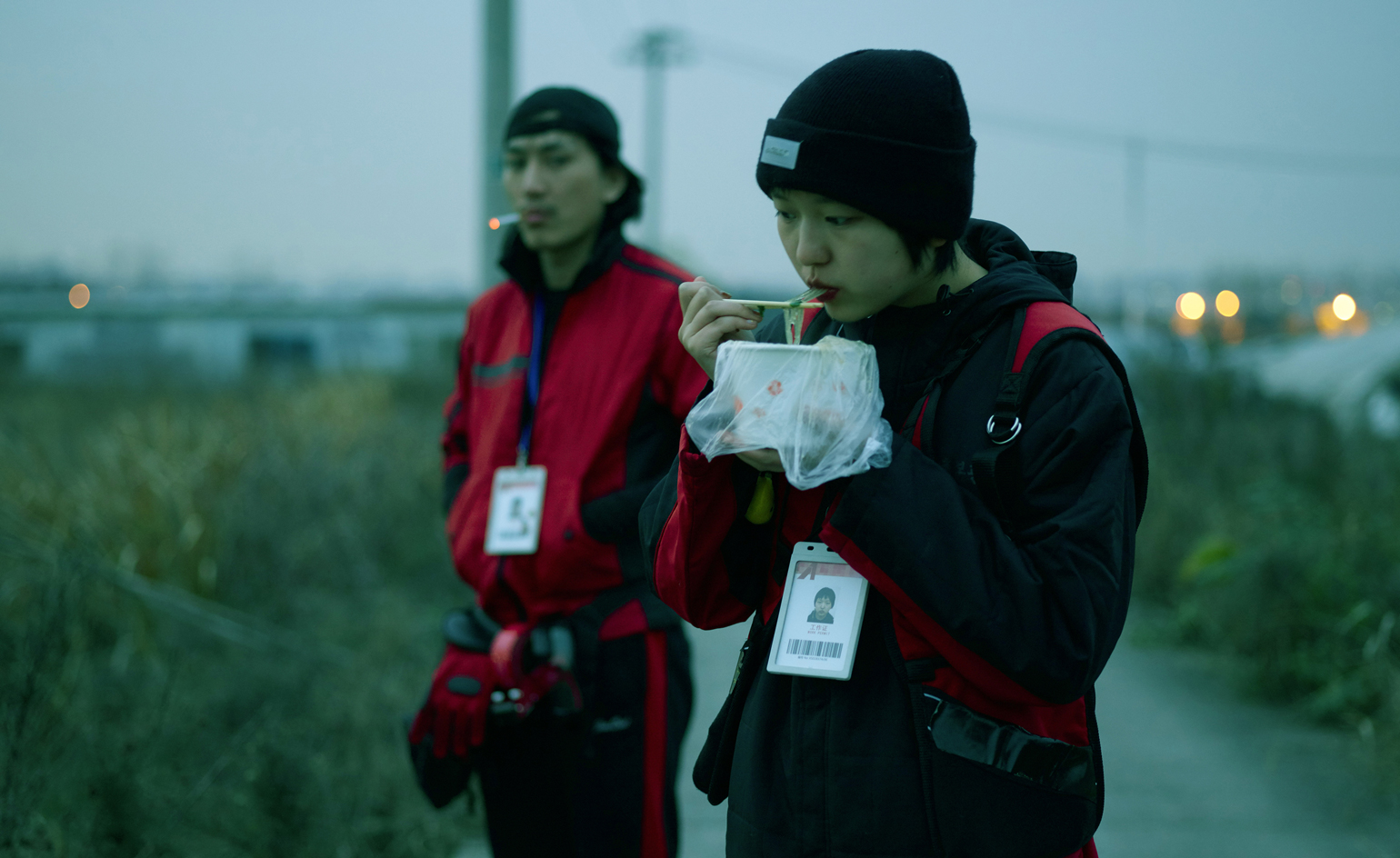
Still from Asia One, 2018, by Cao Fei. Single-channel HD video, 2.35:1, colour with sound, 63min 21sec. Commissioned by the Solomon R Guggenheim Museum, New York, for the Robert H N Ho Family Foundation Chinese Art Initiative. Courtesy of the artist, Vitamin Creative Space and Sprüth Magers

Still from Asia One, 2018, by Cao Fei. Single-channel HD video, 2.35:1, colour with sound, 63min 21sec. Commissioned by the Solomon R Guggenheim Museum, New York, for the Robert H N Ho Family Foundation Chinese Art Initiative. Courtesy of the artist, Vitamin Creative Space and Sprüth Magers
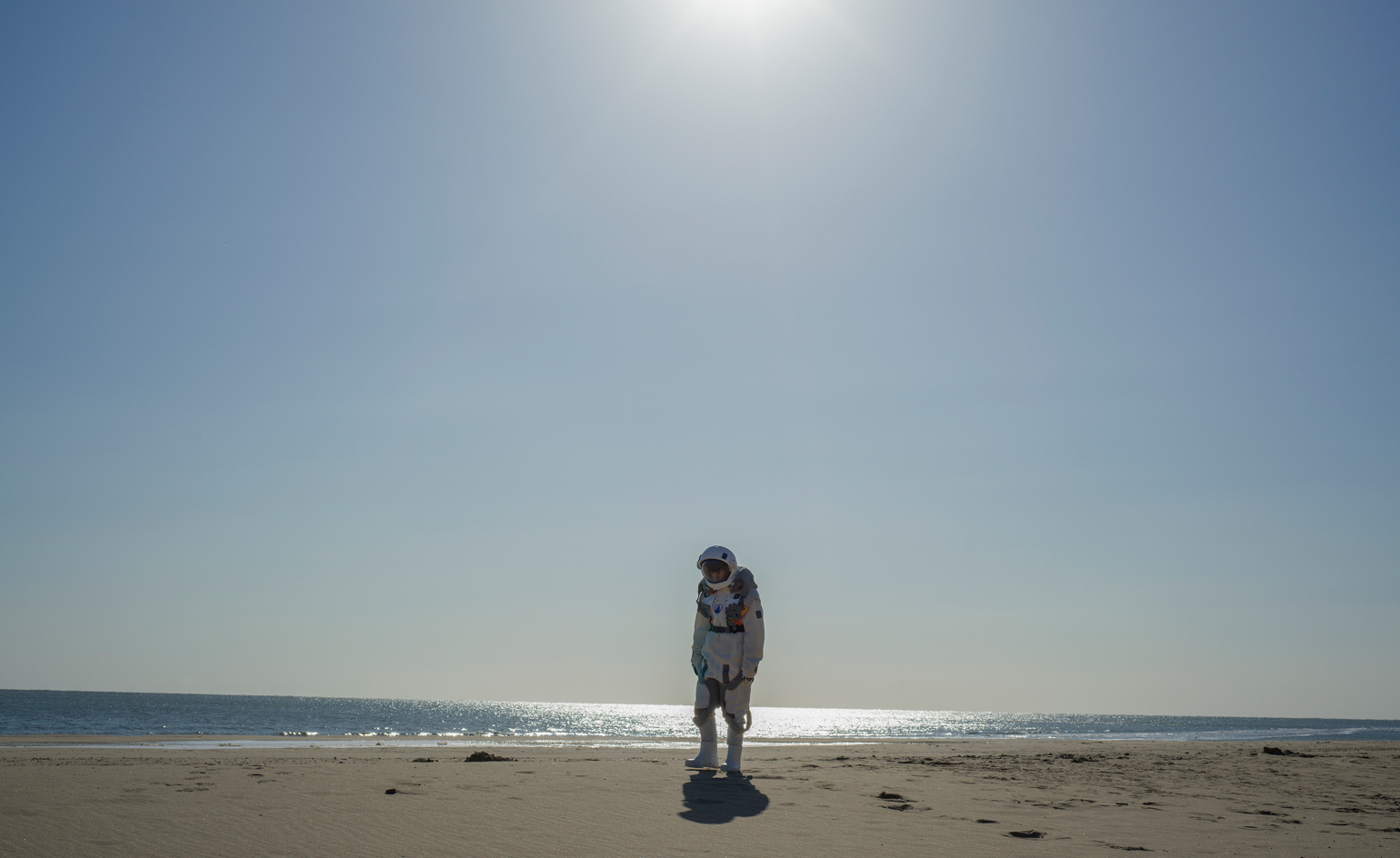
Still from Nova, 2019, by Cao Fei. Single-channel HD video, 2.35:1, colour with 5.1 sound, 97min 13sec. Courtesy of the artist, Vitamin Creative Space and Sprüth Magers
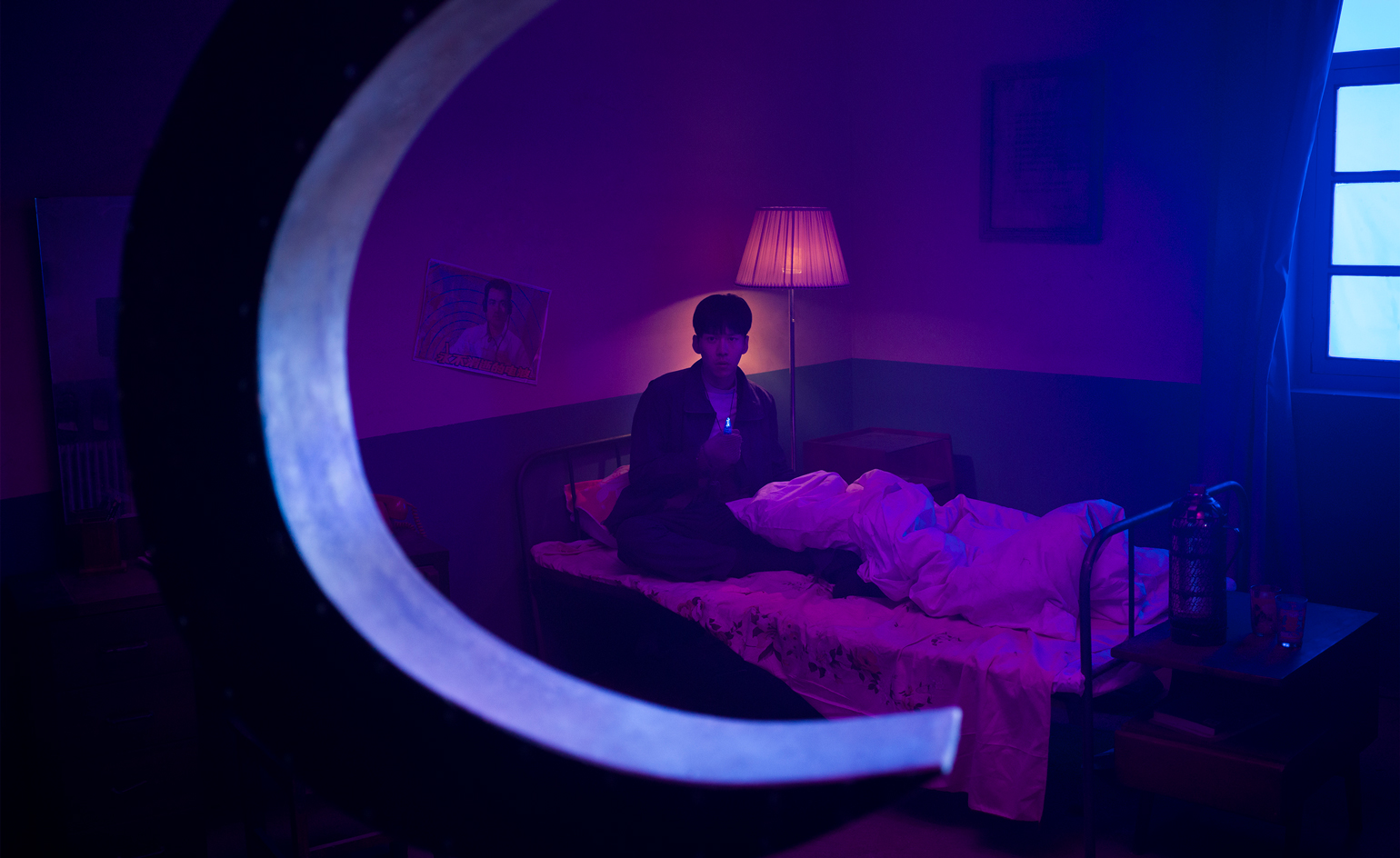
Still from Nova, 2019, by Cao Fei. Single-channel HD video, 2.35:1, colour with 5.1 sound, 97min 13sec. Courtesy of the artist, Vitamin Creative Space and Sprüth Magers
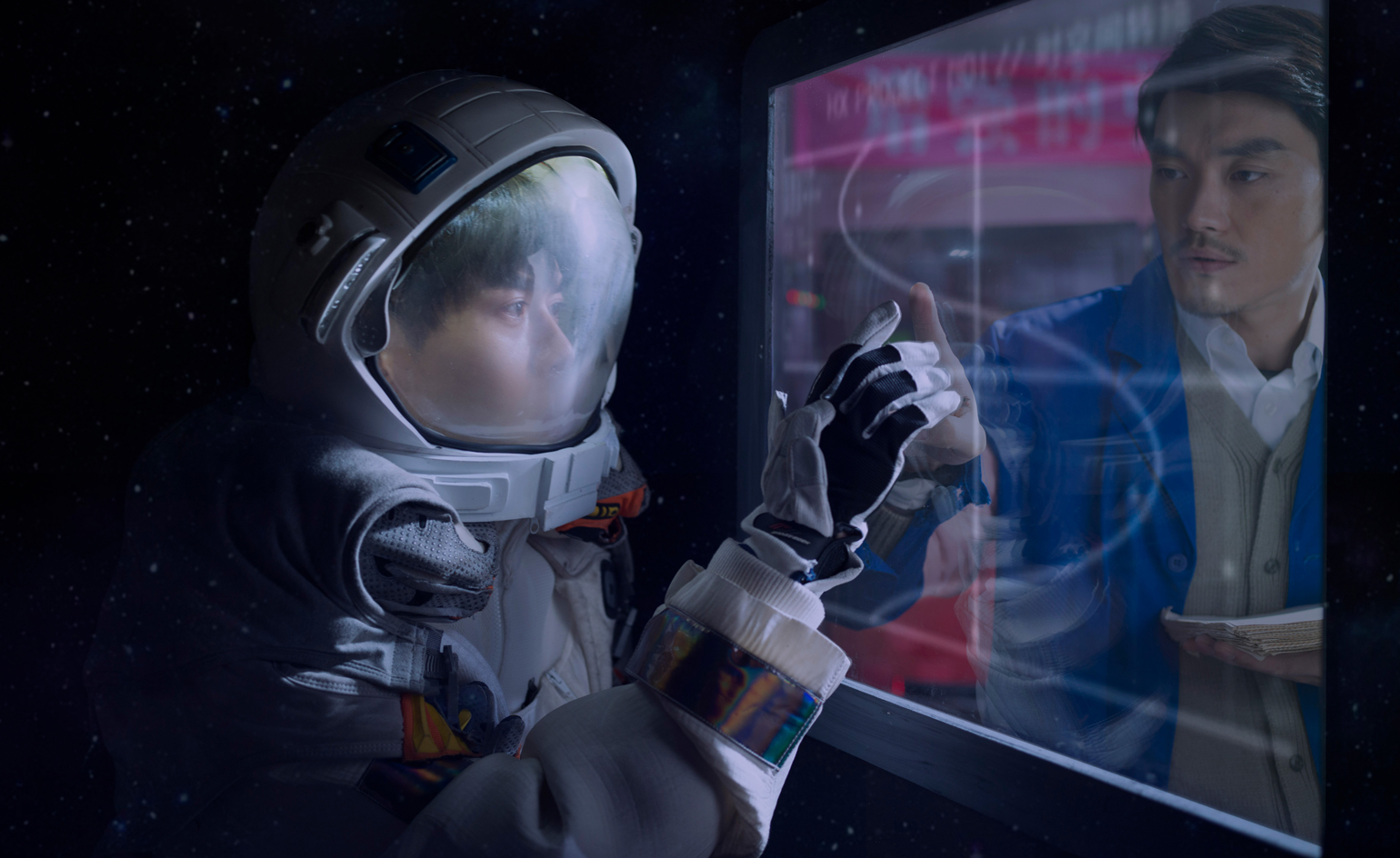
Still from Nova, 2019, by Cao Fei. Single-channel HD video, 2.35:1, colour with 5.1 sound, 97min 13sec. Courtesy of the artist, Vitamin Creative Space and Sprüth Magers

Still from Nova, 2019, by Cao Fei. Single-channel HD video, 2.35:1, colour with 5.1 sound, 97min 13sec. Courtesy of the artist, Vitamin Creative Space and Sprüth Magers
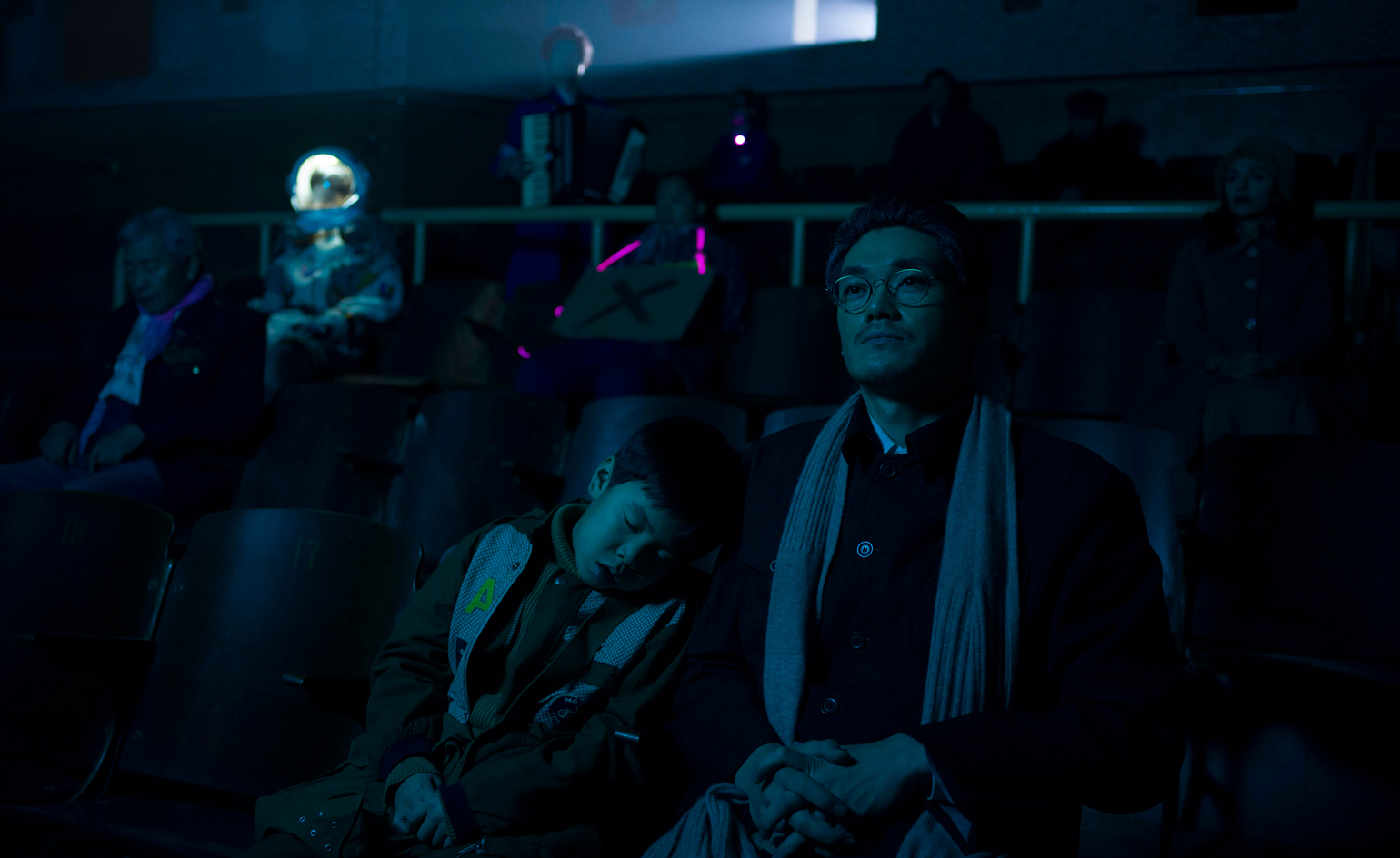
Still from Nova, 2019, by Cao Fei. Single-channel HD video, 2.35:1, colour with 5.1 sound, 97min 13sec. Courtesy of the artist, Vitamin Creative Space and Sprüth Magers
INFORMATION
Cao Fei’s eponymous show runs until 20 November at Sprüth Magers LA, spruethmagers.com; ‘Supernova’ runs from 16 December 2021 – 24 April 2022 at MAXXI, Rome, maxxi.art; caofei.com
A version of this article appears in the November 2021 issue of Wallpaper* (W*271). Subscribe today
Daven Wu is the Singapore Editor at Wallpaper*. A former corporate lawyer, he has been covering Singapore and the neighbouring South-East Asian region since 1999, writing extensively about architecture, design, and travel for both the magazine and website. He is also the City Editor for the Phaidon Wallpaper* City Guide to Singapore.
- Jin Jia Ji - PhotographyPhotographer
-
 Nela is London's new stage for open-fire gastronomy
Nela is London's new stage for open-fire gastronomyA beloved Amsterdam import brings live-fire elegance to The Whiteley’s grand revival
-
 How we host: with Our Place founder, Shiza Shahid
How we host: with Our Place founder, Shiza ShahidWelcome, come on in, and take a seat at Wallpaper*s new series 'How we host' where we dissect the art of entertaining. Here, we speak to Our Place founder Shiza Shahid on what makes the perfect dinner party, from sourcing food in to perfecting the guest list, and yes, Michelle Obama is invited
-
 Matteo Thun carves a masterful thermal retreat into the Canadian Rockies
Matteo Thun carves a masterful thermal retreat into the Canadian RockiesBasin Glacial Waters, a project two decades in the making, finally surfaces at Lake Louise, blurring the boundaries between architecture and terrain
-
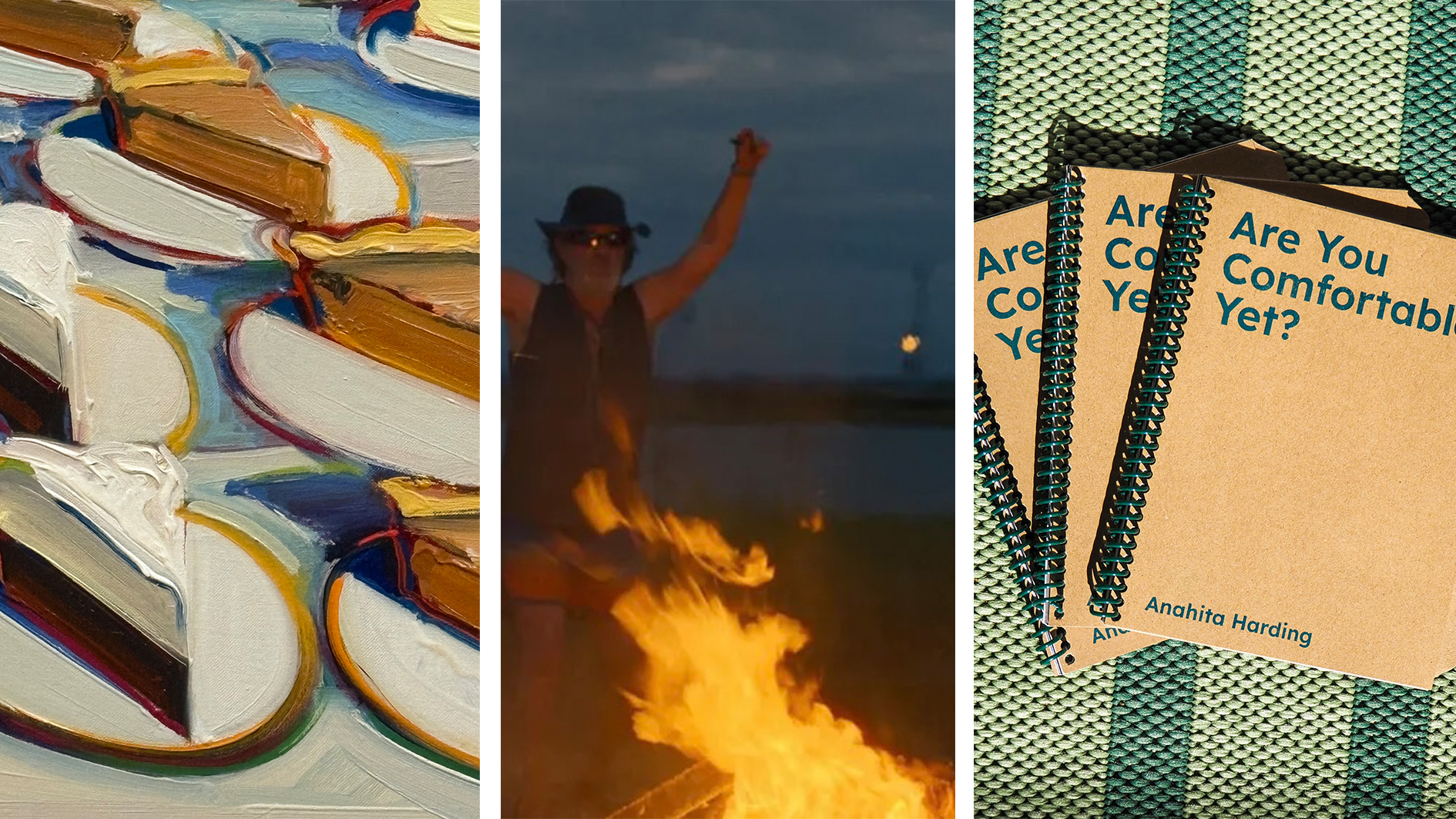 Out of office: the Wallpaper* editors’ picks of the week
Out of office: the Wallpaper* editors’ picks of the weekAs we approach Frieze, our editors have been trawling the capital's galleries. Elsewhere: a 'Wineglass' marathon, a must-see film, and a visit to a science museum
-
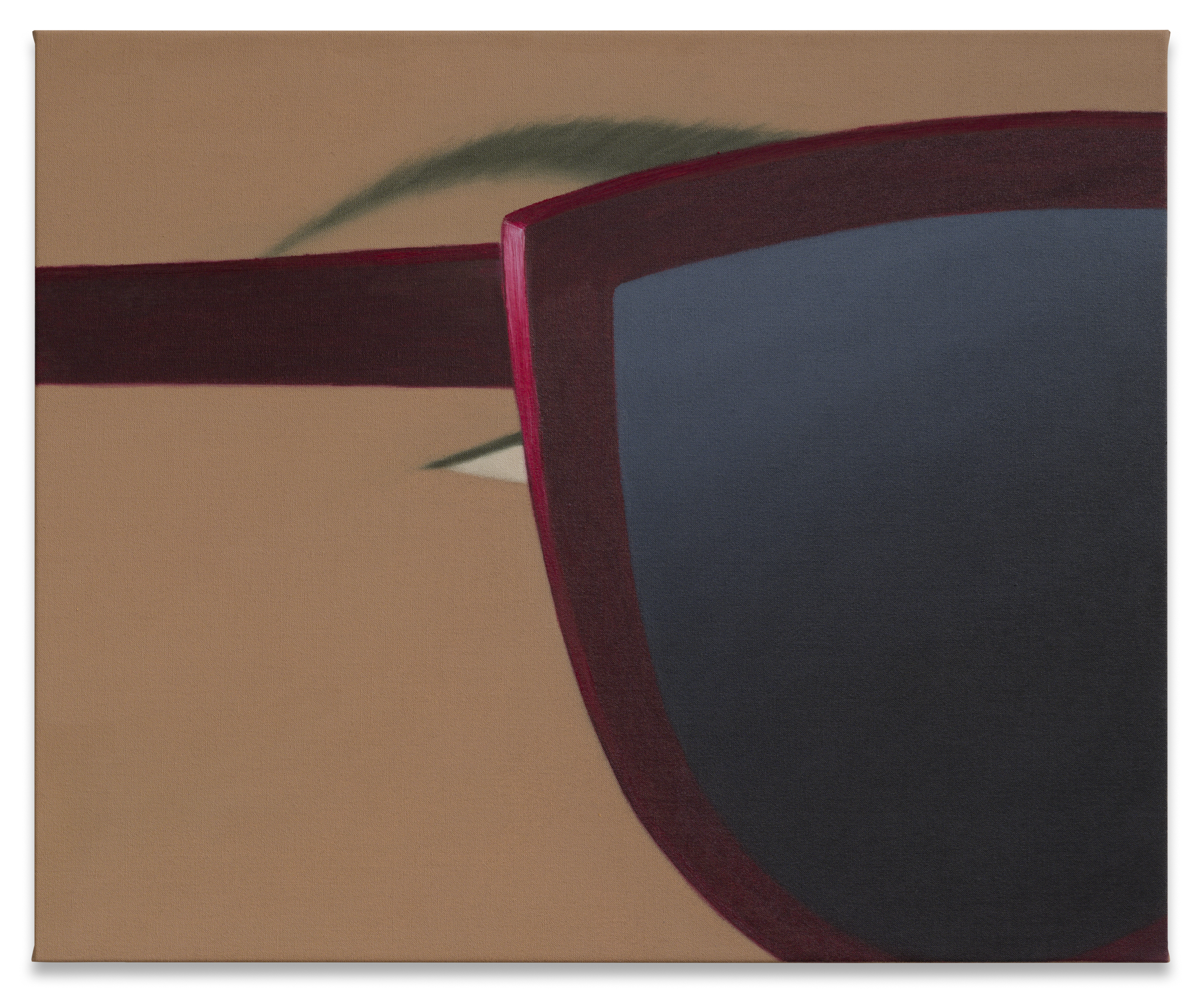 What's the story with Henni Alftan’s enigmatic, mysterious paintings? The artist isn’t saying
What's the story with Henni Alftan’s enigmatic, mysterious paintings? The artist isn’t sayingParis-based artist Henni Alftan's familiar yet uncanny works are gloriously restrained. On the eve of a Sprüth Magers exhibition in Berlin, she tells us why
-
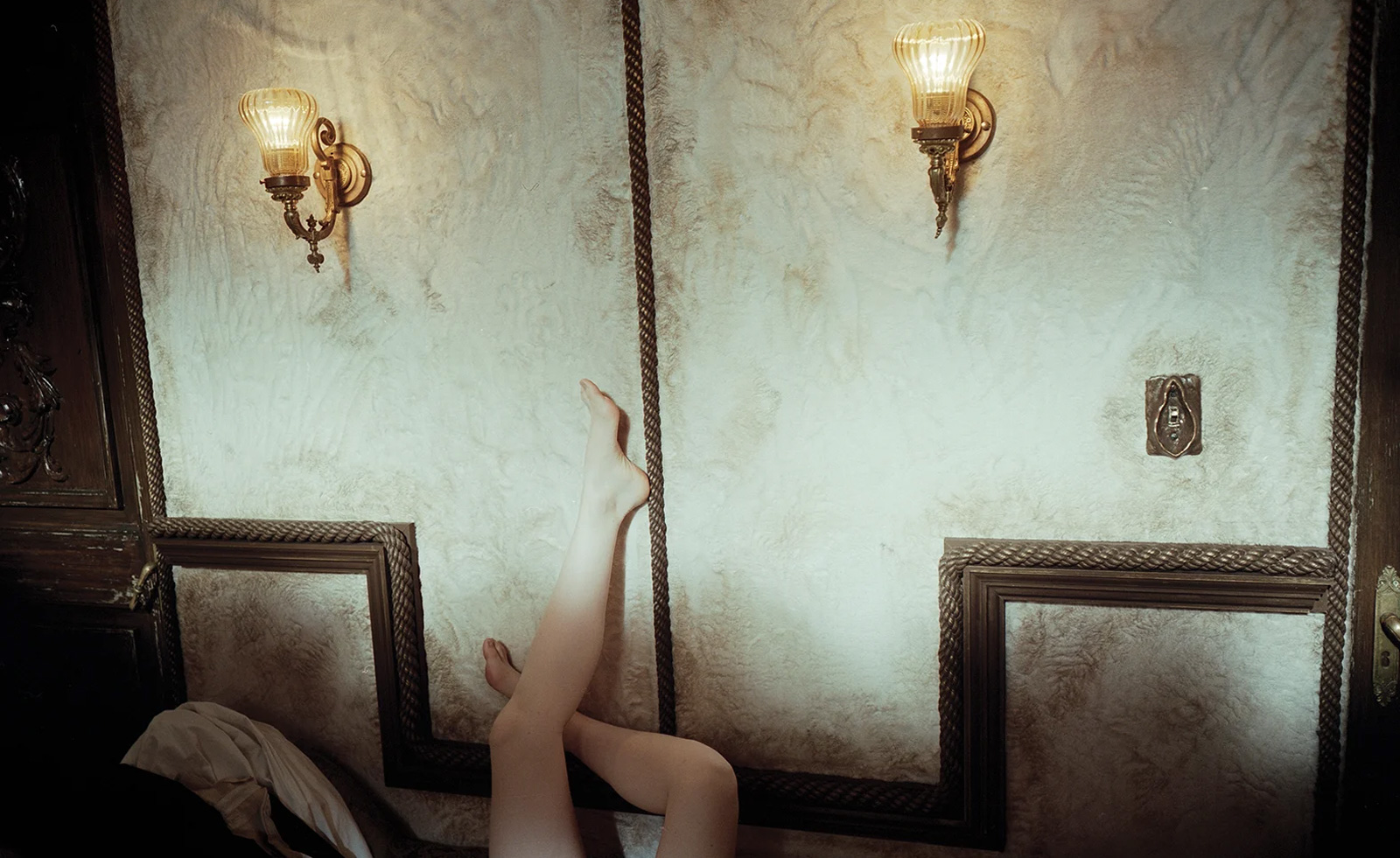 Unlike the gloriously grotesque imagery in his films, Yorgos Lanthimos’ photographs are quietly beautiful
Unlike the gloriously grotesque imagery in his films, Yorgos Lanthimos’ photographs are quietly beautifulAn exhibition at Webber Gallery in Los Angeles presents Yorgos Lanthimos’ photography
-
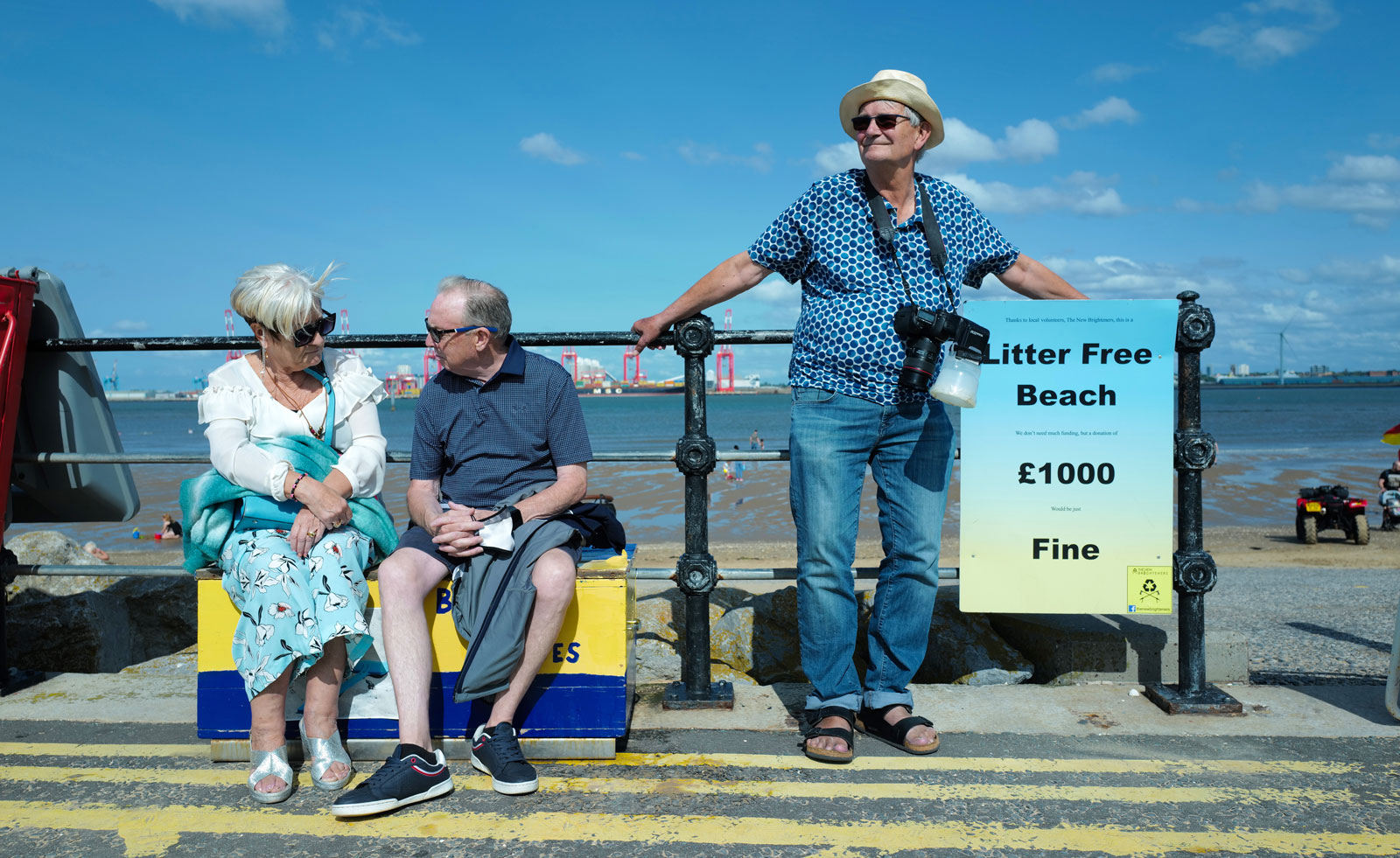 ‘Life is strange and life is funny’: a new film goes inside the world of Martin Parr
‘Life is strange and life is funny’: a new film goes inside the world of Martin Parr‘I Am Martin Parr’, directed by Lee Shulman, makes the much-loved photographer the subject
-
 The Chemical Brothers’ Tom Rowlands on creating an electronic score for historical drama, Mussolini
The Chemical Brothers’ Tom Rowlands on creating an electronic score for historical drama, MussoliniTom Rowlands has composed ‘The Way Violence Should Be’ for Sky’s eight-part, Italian-language Mussolini: Son of the Century
-
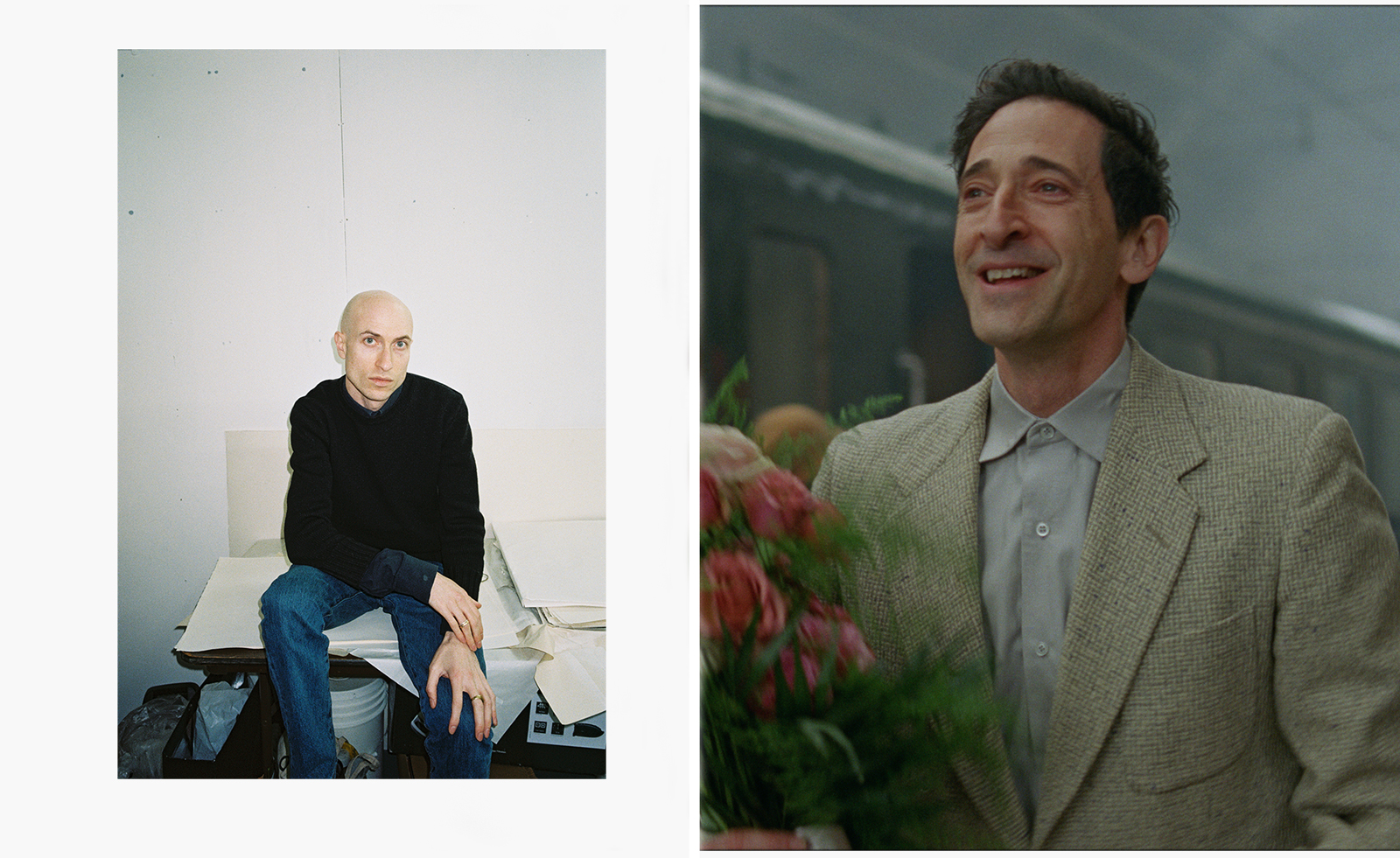 Meet Daniel Blumberg, the British indie rock veteran who created The Brutalist’s score
Meet Daniel Blumberg, the British indie rock veteran who created The Brutalist’s scoreOscar and BAFTA-winning Blumberg has created an epic score for Brady Corbet’s film The Brutalist.
-
 Remembering David Lynch (1946-2025), filmmaking master and creative dark horse
Remembering David Lynch (1946-2025), filmmaking master and creative dark horseDavid Lynch has died aged 78. Craig McLean pays tribute, recalling the cult filmmaker, his works, musings and myriad interests, from music-making to coffee entrepreneurship
-
 What is RedNote? Inside the social media app drawing American users ahead of the US TikTok ban
What is RedNote? Inside the social media app drawing American users ahead of the US TikTok banDownloads of the Chinese-owned platform have spiked as US users look for an alternative to TikTok, which faces a ban on national security grounds. What is Rednote, and what are the implications of its ascent?